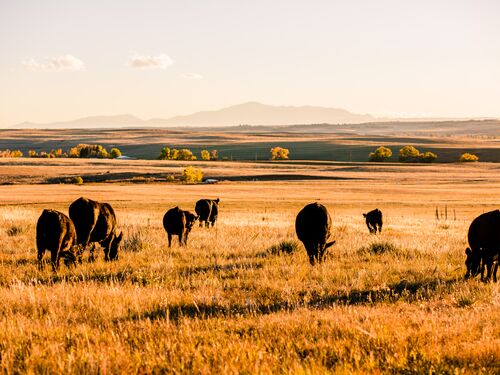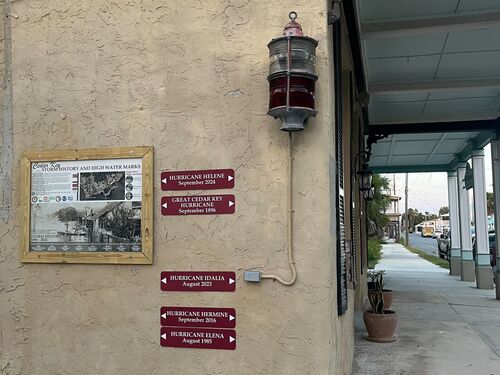Building the Foundation of Climate Science
Program News
Last update April 14, 2025
As we celebrate Earth Month, we are kicking off a series of retrospectives on National Academies’ reports and activities related to climate science.
The National Academies took on the complex challenge of understanding our changing climate decades ago and continue to build on that foundation today. Our expansive portfolio includes work on modeling and other tools to study climate, how to address emissions and lessen impacts, and the human dimension of climate change. To begin, an essential part of that work was the foundational understanding of if, why, and how the Earth’s climate is changing.
In the 1970s, the idea that human activities associated with burning fossil fuels could introduce enough greenhouse gases into the atmosphere to change the global climate was still largely theoretical. Observations of CO₂ from Mauna Loa Observatory in Hawaii had been collected for just two decades, providing early evidence that atmospheric greenhouse gases were increasing, but temperature records going back to the 1880s did not yet indicate any definitive trend. The first climate models were being developed by scientists interested in applying relatively new computational capabilities to improve understanding of how the climate system works. These models were cutting edge at the time, but quite primitive compared to today’s models –the models had a simplified representation of the Earth system and had not been widely validated by observations.
The first landmark National Academies climate report, Carbon Dioxide and Climate: A Scientific Assessment, was published in 1979. Often simply called the “Charney Report,” after the chair Jule Charney, it was authored by a group of scientists who gathered at Woods Hole. Drawing on the initial evidence, they developed the first estimates of how much warming might be expected from a doubling of CO₂ in the atmosphere, a quantity now referred to as the equilibrium climate sensitivity. This report continues to be celebrated as the first assessment of what is known about climate change.
The scientist leading development of one of the climate models featured in the Charney Report, Dr. Suki Manabe, reflected when receiving his Nobel Prize, “I did these experiments out of pure scientific curiosity. I never realized that it would become a problem of such wide-ranging concern for all of human society.”
Climate observations and modeling capabilities improved significantly over the next two decades. This new data and research expanded our knowledge of the climate system and also led to new questions. At the request of newly elected president George W. Bush, the National Academies again examined the state of understanding about climate change in 2001.
The report Climate Change Science stated that, “greenhouse gases are accumulating in Earth's atmosphere as a result of human activities, causing surface air temperatures and subsurface ocean temperatures to rise. Temperatures are, in fact, rising.” But the report authors were less confident in attributing the observed temperature rise to human activities, stating, “The changes observed over the last several decades are likely mostly due to human activities, but we cannot rule out that some significant part of these changes is also a reflection of natural variability.”
These statements reflected the careful consideration emblematic of the rigorous National Academies report process, which can bring attention to both what is known and where more evidence is needed. Indeed, the key uncertainties identified in this report shaped research priorities in the following years.
Less than ten years later, the U.S. Congress asked the National Academies to undertake a comprehensive review of our understanding of climate change, its impacts, and options for responding. The first volume of this work, released in 2010, America’s Climate Choices: Advancing the Science of Climate Change reflected the massive work of the field to examine the role of humans in modern climate change. "These reports show that the state of climate change science is strong," Ralph J. Cicerone, president of the National Academy of Sciences at the time, said. The report clearly stated: “Climate change is occurring, is caused largely by human activities, and poses significant risks for—and in many cases is already affecting—a broad range of human and natural systems.”
These examples, together with many other National Academies reports, chronicled the evolution of our understanding of the climate system and how it is changing. “It’s remarkable to see how questions posed by scientists in the early reports, were answered with rigorous evidence in later reports,” said Amanda Staudt, Climate Crossroads Senior Director. “Today’s climate models have come a long way from those featured in the Charney report and are now important tools to inform real-world decisions across many economic sectors.”
Even with the substantial increase in our knowledge, a 2021 report Next Generation Earth Systems Science concluded that “our understanding has struggled to keep pace with the rapid changes in the Earth’s natural systems, the magnitude of human influences on them, the systems’ impacts on human and ecosystem sustainability and resilience, and the effectiveness of different pathways to address these challenges.”
“The next decades of climate research will be challenging, as scientists from many different disciplines work together to uncover more complexity of the climate system,” said Staudt. “And it will be exciting to see how new climate knowledge that emerges will help us build a more resilient future.”



